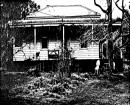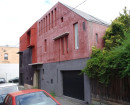JANEVALE BRIDGE OVER THE LODDON RIVER
TARNAGULLA LAANECOORIE ROAD LAANECOORIE, LODDON SHIRE
-
Add to tour
You must log in to do that.
-
Share
-
Shortlist place
You must log in to do that.
- Download report
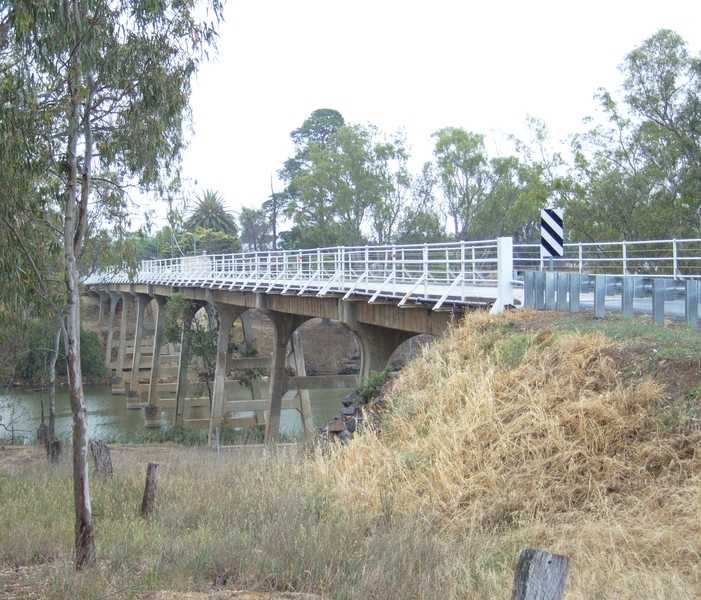

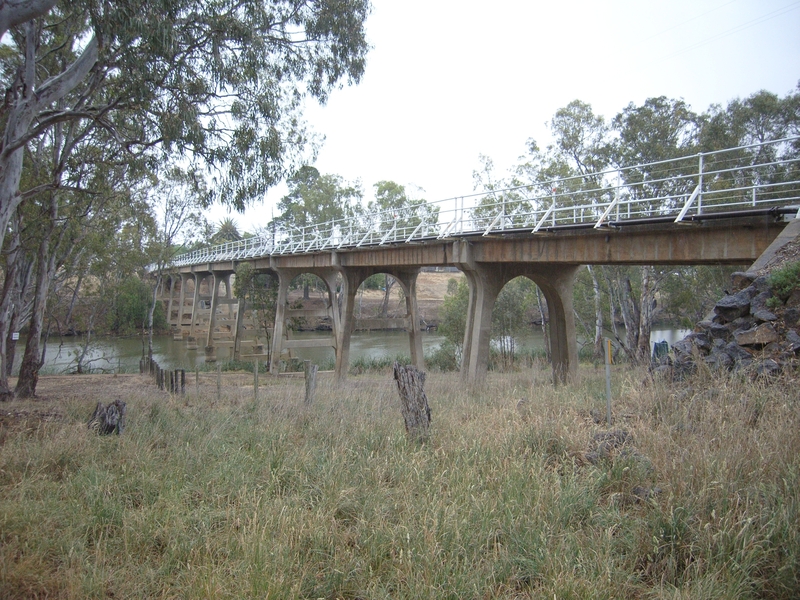
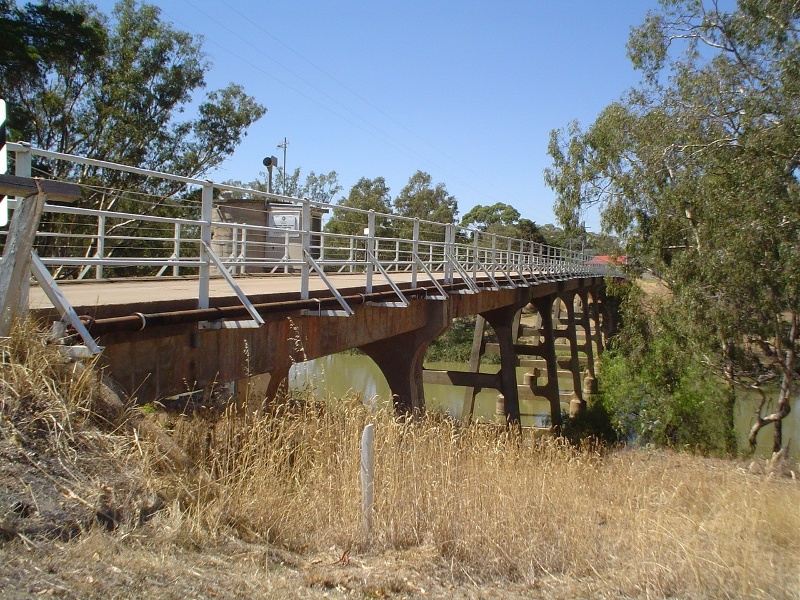






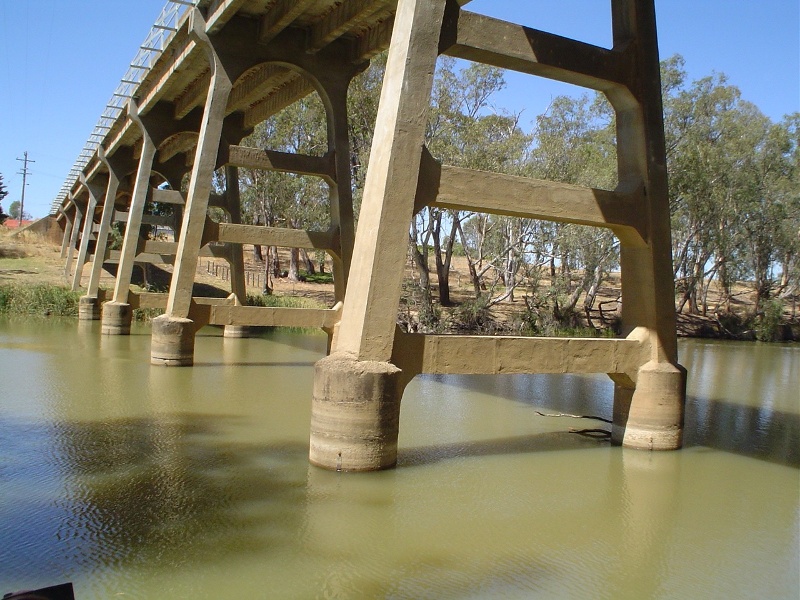
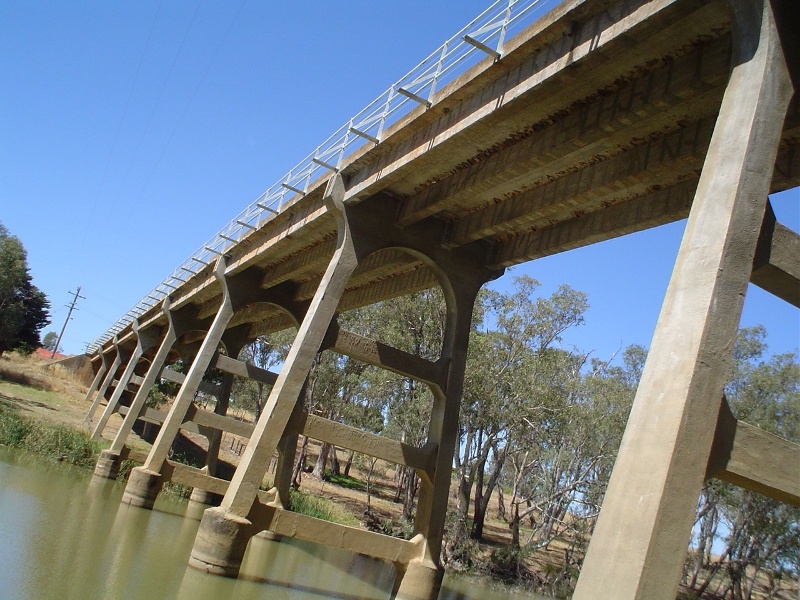
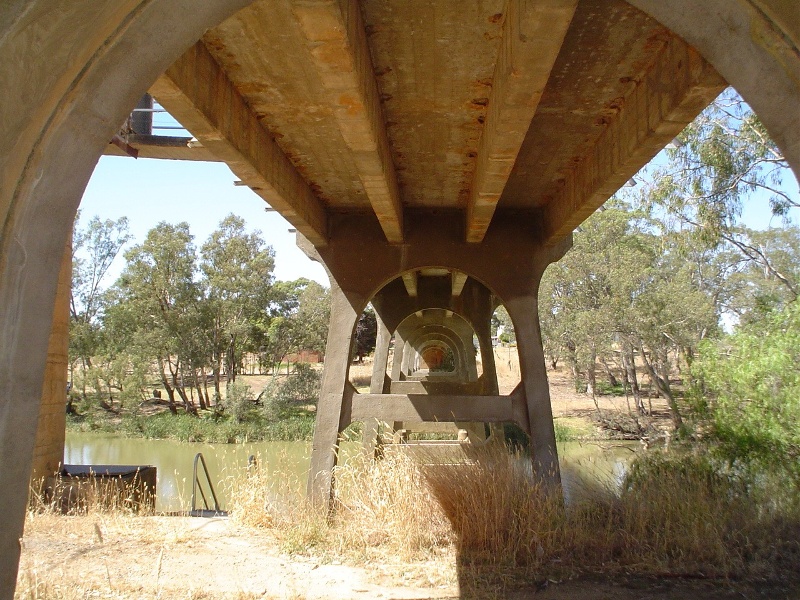
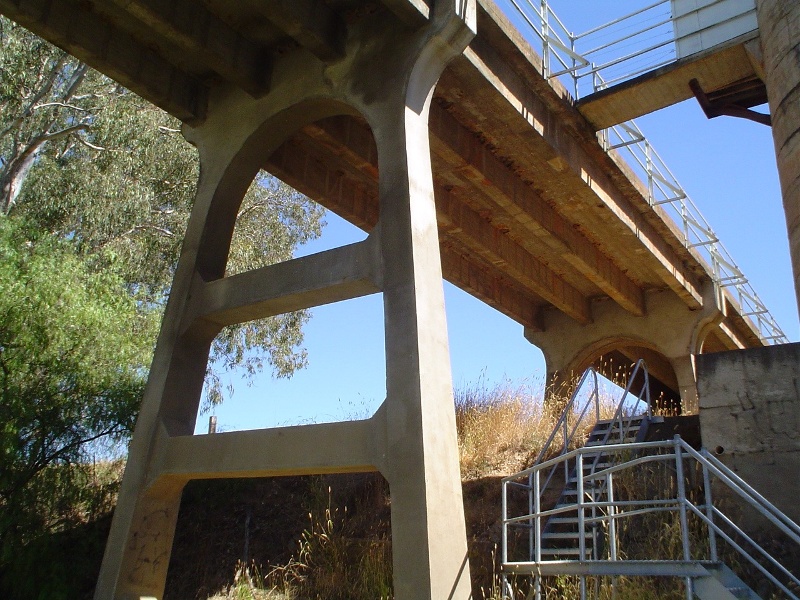
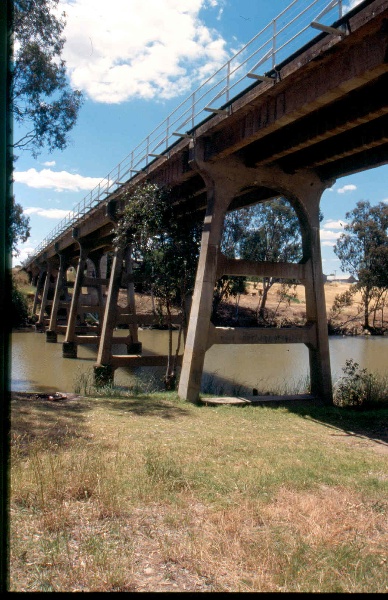
Statement of Significance
What is significant?
The first Janevale Bridge, a large timber structure over the Loddon River at Laanecoorie, was built in the 1870s to connect the Mining District of Tarnagulla with Bendigo. It was one of several timber bridges that were lost in the Marong Shire during the widespread floods in Victoria in 1909. The Marong Shire Engineer consulted engineer John Monash regarding the cost for replacement of the Bullock Creek Bridge Melbourne Road, and the Janevale Bridge, with reinforced concrete structures. Monash with JT Noble Anderson had acquired the licence to construct the patent Monier arch in Victoria in 1897, and built a number of Monier arch bridges around the state in the following years. Monash formed the Reinforced Concrete and Monier Pipe Construction Co Pty Ltd in 1905. By this time he was experimenting with reinforced concrete girder bridges, the technology of which was still in its infancy worldwide.
Monash was an early developer and promoter of T-girder reinforced concrete design, which made a more economical use of materials than the Monier arch bridges, and was more suited to low approaches. The first application in Stawell Street Ballarat East soon failed, but the 1905 St Kilda Street Bridge over the Elwood canal is still in service. The 400 foot long Broken River Benalla Bridge using T-girder construction had been completed in 1910. By 1915 Monash's firm had built around 70 T-girder bridges in Victoria.
Monash put forward a cost estimate of £4000 for construction of a reinforced concrete girder bridge at Janevale, which was similar to the Shire Engineer's estimate for a timber bridge. The Public Works Department considered both prices too low, but Monash, in conjunction with Read, proceeded to develop a design with 40 foot spans. Tenders were called for timber and concrete bridges, and Monash's tender was eventually accepted. The bridge was a joint project with the Bet Bet Council. Work commenced in October 1910. The bridge was tested satisfactorily in July 1911 and the official opening, attended by 600 people, was on 10 August 1911. The Shire Engineer was given credit for the design. The new bridge was longer than the previous longest of its type in the State, at Benalla (also by Monash), by 20 feet. By 1912 cracks were discovered in the bridge but Monash asserted that they were no more extensive than expected. Further tests were conducted. In the 1930s the Country Roads Board introduced additional shear reinforcement to counter extensive cracking.
The reinforced concrete girder bridge has 10 spans of 42 feet (12.8m) with four girders per span and a deck width of 18 feet (5.49m). Evidence of later addition of stirrup reinforcement to the girders is clearly visible. The slender pier legs are splayed and form an arch at the crosshead. There are up to three transoms on the tallest piers. The four river piers are founded on concrete cylinders and the chamfered upstream faces are protected with embedded heavy iron T sections. The first and ninth piers are doubled to allow an expansion joint, and the eight central spans are continuous. The handrails are of iron on iron standards. A commemorative granite block at the southwest approach once supported an iron lamp and is engraved with the names of Shire Councillors. The bridge is still in use but now has a 12 tonne load limit.
How is it significant?
The Janevale Bridge is of technological, architectural and historical significance to the State of Victoria
Why is it significant?
The Janevale Bridge is of technological significance as the largest reinforced girder bridge designed and built by John Monash and the Reinforced Concrete & Monier Pipe Construction Co. and the largest bridge of its kind built in Victoria, and possibly Australia prior to the First World War. Although representative of early T-girder construction, this bridge also exhibits the rare use of splayed trestle piers in reinforced concrete, reminiscent of the traditional timber trestle bridges, and is quite a departure from Monash's earlier designs in Victorian bridges. Monash's T-girder bridges were influential in the development of the technology of girder construction which was to come into general acceptance from 1915 onwards.
The Janevale Bridge is of architectural significance as a functional design displaying a degree of elegance which is rare in early reinforced concrete bridges in the State. The bridge also forms part of an aesthetically pleasing river landscape.
The Janevale Bridge is of historical significance for its association with Sir John Monash, soldier, engineer and administrator, who, at the time of the bridge's construction, directed the Reinforced Concrete and Monier Pipe Construction Company, the company at the forefront of reinforced concrete construction in Victoria.
The Janevale Bridge is of historical significance as part of the transport link between the Tarnagulla gold mining district and the regional centre of Bendigo.
-
-
JANEVALE BRIDGE OVER THE LODDON RIVER - History
Excerpt of Monash Bridges Typology Study: Typology Study Reinforced Concrete Bridges in Victoria 1897-1917. Lesley Alves, Alan Holgate, Geoff Taplin 1998.
Widespread flooding throughout Victoria in September 1909 provided Monash with an opportunity to promote his Company's reinforced concrete bridge designs. "Upwards of forty of our bridges were within the flood area", he wrote to a prospective customer, “but we have not heard of one penny worth of damage". One municipality to suffer heavily from the flood was the Marong Shire, with the loss of several timber bridges, including one over the Bullock Creek on the Melbourne Road and the large Janevale bridge over the Loddon River at Laanecoorie, built in the 1870s to connect the mining district of Tarnagulla with Bendigo.
The Shire Engineer, G. S. Read, prepared designs for the two bridges in timber. He also consulted Monash regarding the cost of reinforced concrete. Monash estimated £520 for Bullock Creek and £4000 for Janevale, and had a design drawn up for the Bullock Creek bridge. Although he was keen to get such a large job, Monash was reluctant to spend time on designs for Janevale until he knew his chances of getting the contract. He sounded out Kermode of the Public Works Department, for a "private hint" about his chances with the prices mentioned. Kermode considered Read's estimate of £4100 for his timber design for Janevale much too low, and also thought Monash's estimate of £4000 low for reinforced concrete. He expressed surprise that Monash was bothering about such a small job as Bullock Creek bridge. But for Monash no job was too small, especially if it could lead to a bigger one. His tender of £525 for the Bullock Creek bridge was defeated by J. Smith's tender of £403 for the timber design.
Meanwhile, Monash, encouraged by Kermode's remarks about prices and Read's assurance that he and his council favoured reinforced concrete, set about developing a design for the Janevale Bridge. In consultation with Read, a design of ten 40 foot spans was settled on and J.A. Laing commenced the drawings. Alternative tenders for timber and reinforced concrete were called in mid February 1910.6 Although Monash's tenders were "well in the running" there were a couple of concerns to resolve. Firstly Read was particularly concerned about the slender columns, and wanted them thickened against floating timbers. Monash replied that "the employment of a large bulk of concrete in this way is quite opposed to the principles of reinforced concrete design", but offered to provide extra protection on the upstream side of the columns using iron T sections (as explained above). Secondly, the Councillors were worried that the Company would add on extras after the contract. Monash responded indignantly to the "accusation that this Company endeavours to make capital out of extras" offering an additional clause in the contract that no extras would be paid for unless authorised by Council.
Satisfied, Marong council accepted the tender on 12 March. As the bridge was to be a joint project with the neighbouring Shire of Bet Bet, the plans were forwarded to that council for approval. Bet Bet Council delayed proceedings while they sought an increased government grant, and succeeded in obtaining an increase of £300 on the £1300 already offered. By the time the Public Works Department approved the plans it was September. Work commenced in October. 9 In December Read suspended the work because of a serious dispute over gauging (measuring) the cement for the concrete, with Monash giving in to Read's demands to avoid bad publicity. The concrete work was completed in May and the bridge was tested satisfactorily on 19 July 1911. The final cost was £4058.
The local people had put up with two years of inconvenience -the lack of a bridge meant a 6 mile detour for many -so the opening of the new bridge on 10 August was a cause for celebration. It was also an expression of civic pride. At 420 feet, Janevale bridge was the longest one of its kind in Australia, surpassing the previous record holder, Benalla Bridge, by 20 feet. The ceremony was attended by 600 people, including councillors from neighbouring municipalities, members of parliament and the Maldon Brass Band, and followed by a banquet with the usual political and congratulatory speeches. As at Benalla, the Shire Engineer was given credit for the design - and his 21/2% commission. The Reinforced Concrete & Monier Pipe Construction Co., represented on the day by Alex Lynch, was acknowledged merely as construction contractor.
In January 1912, the new Shire Engineer, Mr LeCoq, discovered cracks in the bridge. Monash made light of the matter -only five cracks, it was usual to find cracks due to thermal expansion - but Council withheld the final payment until another test was made. As far as Monash was concerned, a severe test had been made, and he had a certificate to prove it. He attributed LeCoq's concern to his lack of experience with reinforced concrete, and strongly objected to the suggestion that an engineer in private practice be called into arbitrate, because there was no such engineer with the appropriate experience. Clearly Monash regarded himself as theexpert in reinforced concrete. Kermode, Catani and Read were brought into the discussion, another test was conducted and the argument dragged on until May. Whether Council were eventually satisfied with the outcome is not known.
In the 1930s the Country Roads Board found that the early T-beam bridges had insufficient shear reinforcing in the beams. Janevale Bridge was found to have extensive cracking in the beam stems and was unsafe for wheat traffic. The Board carried out strengthening work by cutting chases down the sides of the beams and inserting U stirrups. The bridge currently has a 12 tonne limit on it.
JANEVALE BRIDGE OVER THE LODDON RIVER - Plaque Citation
This reinforced concrete girder bridge was designed by John Monash and opened in 1911. It was the largest bridge of its kind built in Victoria before World War I and is a rare example of splayed trestle piers in reinforced concrete.
JANEVALE BRIDGE OVER THE LODDON RIVER - Permit Exemptions
General Exemptions:General exemptions apply to all places and objects included in the Victorian Heritage Register (VHR). General exemptions have been designed to allow everyday activities, maintenance and changes to your property, which don’t harm its cultural heritage significance, to proceed without the need to obtain approvals under the Heritage Act 2017.Places of worship: In some circumstances, you can alter a place of worship to accommodate religious practices without a permit, but you must notify the Executive Director of Heritage Victoria before you start the works or activities at least 20 business days before the works or activities are to commence.Subdivision/consolidation: Permit exemptions exist for some subdivisions and consolidations. If the subdivision or consolidation is in accordance with a planning permit granted under Part 4 of the Planning and Environment Act 1987 and the application for the planning permit was referred to the Executive Director of Heritage Victoria as a determining referral authority, a permit is not required.Specific exemptions may also apply to your registered place or object. If applicable, these are listed below. Specific exemptions are tailored to the conservation and management needs of an individual registered place or object and set out works and activities that are exempt from the requirements of a permit. Specific exemptions prevail if they conflict with general exemptions. Find out more about heritage permit exemptions here.Specific Exemptions:General Conditions: 1. All exempted alterations are to be planned and carried out in a manner which prevents damage to the fabric of the registered place or object. General Conditions: 2. Should it become apparent during further inspection or the carrying out of alterations that original or previously hidden or inaccessible details of the place or object are revealed which relate to the significance of the place or object, then the exemption covering such alteration shall cease and the Executive Director shall be notified as soon as possible. General Conditions: 3. If there is a conservation policy and plan approved by the Executive Director, all works shall be in accordance with it. General Conditions: 4. Nothing in this declaration prevents the Executive Director from amending or rescinding all or any of the permit exemptions. General Conditions: 5. Nothing in this declaration exempts owners or their agents from the responsibility to seek relevant planning or building permits from the responsible authority where applicable.Exemptions:
* Repair, maintenance and resurfacing of the road pavement.
* Installation, alteration and maintenance of line marking and road surface signage.
* Repair and maintenance painting of balustrading.
* Emergency repairs to make the bridge safe after damage.
* Repairs to river banks and removal and control of vegetation on the registered land.
-
-
-
-
-
JANEVALE BRIDGE OVER THE LODDON RIVER
 Victorian Heritage Register H1986
Victorian Heritage Register H1986
-
'NORWAY'
 Boroondara City
Boroondara City -
1 Mitchell Street
 Yarra City
Yarra City
-
-







